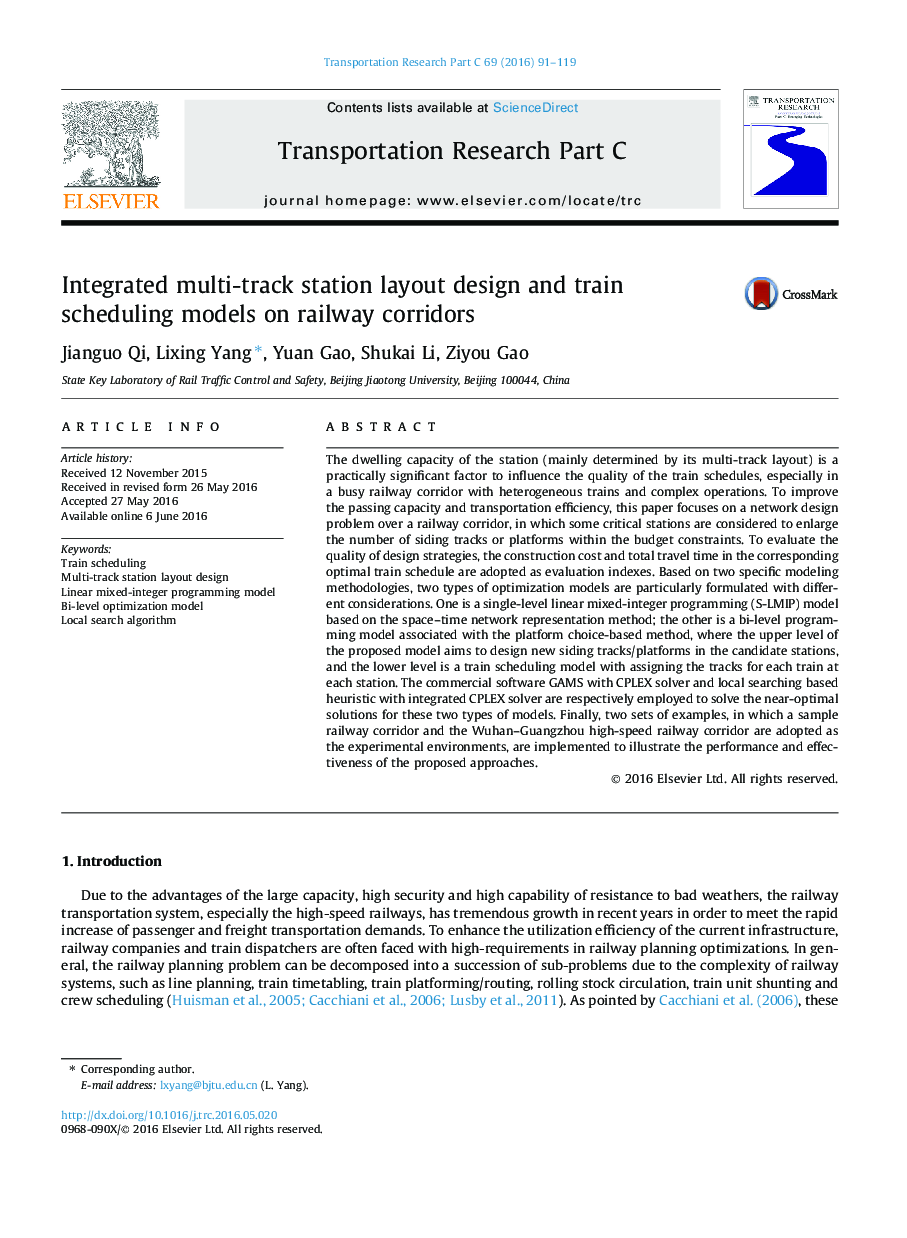| Article ID | Journal | Published Year | Pages | File Type |
|---|---|---|---|---|
| 524721 | Transportation Research Part C: Emerging Technologies | 2016 | 29 Pages |
•Integrated multi-track station layout design and train scheduling problem is explored.•Two types of mathematical optimization models are formulated.•GAMS software and local search based heuristics are used to solve the models.•The effectiveness of the proposed approaches is verified by numerical experiments.
The dwelling capacity of the station (mainly determined by its multi-track layout) is a practically significant factor to influence the quality of the train schedules, especially in a busy railway corridor with heterogeneous trains and complex operations. To improve the passing capacity and transportation efficiency, this paper focuses on a network design problem over a railway corridor, in which some critical stations are considered to enlarge the number of siding tracks or platforms within the budget constraints. To evaluate the quality of design strategies, the construction cost and total travel time in the corresponding optimal train schedule are adopted as evaluation indexes. Based on two specific modeling methodologies, two types of optimization models are particularly formulated with different considerations. One is a single-level linear mixed-integer programming (S-LMIP) model based on the space–time network representation method; the other is a bi-level programming model associated with the platform choice-based method, where the upper level of the proposed model aims to design new siding tracks/platforms in the candidate stations, and the lower level is a train scheduling model with assigning the tracks for each train at each station. The commercial software GAMS with CPLEX solver and local searching based heuristic with integrated CPLEX solver are respectively employed to solve the near-optimal solutions for these two types of models. Finally, two sets of examples, in which a sample railway corridor and the Wuhan–Guangzhou high-speed railway corridor are adopted as the experimental environments, are implemented to illustrate the performance and effectiveness of the proposed approaches.
